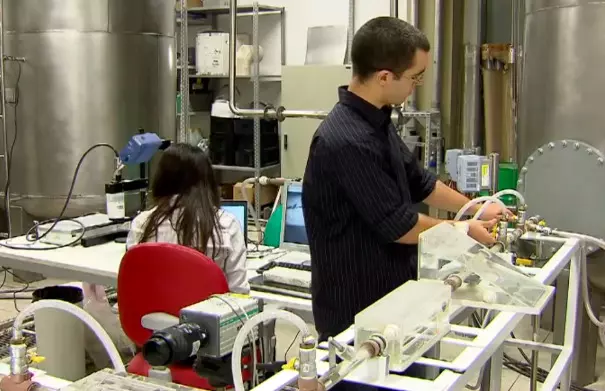UFRJ Team Evaluates PEEK Capillary Tubing with Hastelloy® C-276 for Desulfurization Rigs, Citing Improved CT Data Stability
UFRJ Team Evaluates PEEK Capillary Tubing with Hastelloy®

Rio de Janeiro, Brazil — Researchers at the Federal University of Rio de Janeiro (UFRJ) Polytechnic School report that using PEEK (polyether ether ketone) capillary tubing supplied by BWPEEK—specified as 0.062 in ID × 1/8 in OD, 5 ft length—in combination with Hastelloy® C-276 (1/8 in OD) components helped improve fluid handling and sealing performance under corrosive, high-pressure conditions. According to the team, this reduced CT imaging artifacts and improved data consistency. The configuration assigns PEEK to dynamic flow paths and C-276 to static locations with stronger acidity exposure.
UFRJ project representative (authorized to remain unnamed): “On the desulfurization test bench, we care most about fewer leak paths, faster pressure stabilization, and better repeatability. Using PEEK for flexible high-pressure transport and C-276 for static, corrosion-prone sections gave us a steadier baseline.”
The team adds that PEEK’s pressure/temperature envelope (with a nominal upper limit around 260 °C cited from vendor documentation) suits flexible lines, while the nickel-based Hastelloy® C-276 offers strong corrosion resistance in acidic/sour media for static, load-bearing fittings and clamps. This division of roles reduced seepage and flow fluctuations and yielded smoother CT traces with fewer outliers, the researchers said.Editor’s note: The performance bounds above are vendor or literature nominal ratings. Actual usable ranges depend on rig design, fitting standards, medium chemistry, and coupled temperature-pressure conditions.
Related Materials and Comparative Scenarios
In their public summary, the team referenced several open sources whose trends align with their observations:
- HTHP filtration simulation: Under approximately 250 °F and 300 psi, PEEK-based flow paths reportedly lowered filtration loss and produced a more uniform filter cake, with associated improvements in permeability damage and porosity change.
- CT-compatible porous-media flow: Around 435 psi and 300 °C, combining PEEK/PTFE with C-276 reportedly reduced corrosion artifacts and expanded the valid test window.
- Microwave-assisted desulfurization: Studies at ~65 °C, 1 bar reported high sulfur removal rates and lower apparent activation energy.
BWPEEK technical representative: “We focus on materials selection for academic and industrial rigs—never a substitute for users’ own process and safety assessments. Given different media, pressures, and temperatures, we recommend standards-based and rig-specific validation.”
Operating Conditions and Methods
This communication addresses bench-scale experimentation and does not constitute a direct claim of suitability for industrial units.
- Pressure/temperature limits are nominal for materials or components and must not be simply combined. Practical limits depend on fitting type, wall thickness, medium, T-P coupling, and safety factors.
- CT test conditions (pressure, temperature, acidity, particle types) should be itemized in a methods appendix. If ASTM/ISO or internal SOPs were used, list standard numbers and versions.
Short Q&A Excerpts
Reporter: What changed most in your CT imaging?
- UFRJ team: Smoother baselines and fewer outliers, which increased confidence in mass-balance closure and transport fitting.
Reporter: How does this setup compare with all-metal flow paths?
- UFRJ team: All-metal can excel at extreme pressure, but acidic/sour media raise corrosion and artifact concerns. The PEEK-for-flexible-sections and C-276-for-static-sections approach balances sealing, corrosion resistance, and assembly flexibility.
Disclosures
Supply relationship: BWPEEK supplied the PEEK capillary tubing. The research team states the experiments were primarily funded by university resources (details of funding and in-kind support to be confirmed in writing by both parties).
Sources: The third-party data summarized above come from public literature; the publication version will include complete references and accessible links.

